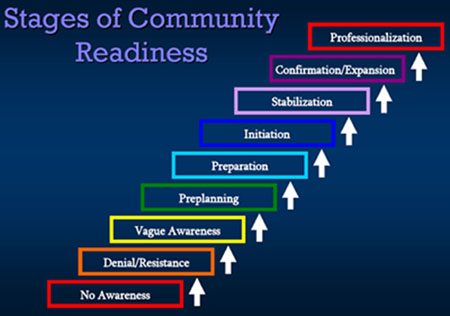Community Readiness for Community Change

The Community Readiness Handbook, now in its second edition, goes over the stages and dimensions of community readiness and has step-by-step instructions for conducting readiness assessments that are instrumental for effective program development and planning. It goes over the stages and dimensions of readiness, has an easy-to-use seven step process for conducting an assessment and concrete ideas for creating a readiness-informed action plan.
Community readiness is defined as the degree to which a community is ready to take action on an issue. Often, when a program fails, it is due to the fact that stakeholders did not have the capacity to take on the action. This resource includes an overview of the importance of readiness to the ultimate success of a program and can help program designers tailor a strategy to the capacity and willingness of the players. It includes assessment and interview questions along with rating scales to score each dimension of readiness so program developers can incorporate findings and ensure that every stage of planning is informed by the capacity of key stakeholders and program implementers.
This resource is free and can be downloaded in pdf form. Visit the website for an overview of the model.

